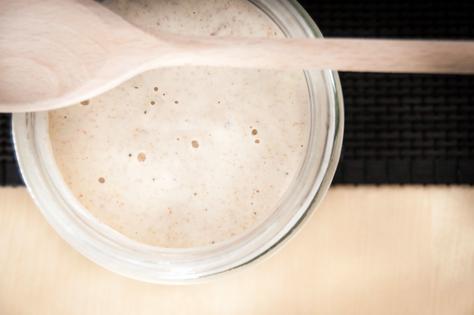THE KITCHN: How to make your sourdough starter
Not all of us are so lucky to have a sourdough starter passed down to us from our bread-baking forefathers and foremothers. Thankfully, making a fresh batch of starter is as easy as stirring together some flour and water and letting it sit. That's right! No expensive heirloom starters, mashed up grapes, or mysterious rituals required -- just flour, water, and a little bit of patience.
What Is Wild Yeast?
Before you get started, let's talk about wild yeast, which is the key to a sourdough starter.
Before we had active-dry yeast or instant yeast, we had wild yeast. Actually, we still have wild yeast. It lives everywhere -- in the air, in a bag of flour, on the surface of grapes. Domesticated commercial yeast replaced wild yeast for most baking because it's easier for companies to mass produce, it's easier for bakers to store and use, and it proofs our breads and pastries in a fraction of the time.
By contrast, wild yeast can be fussy and finicky. It needs a medium, a sourdough starter, in order to be useful to bakers. This medium has to be constantly maintained and monitored. Wild yeast also likes cooler temperatures, acidic environments, and works much more slowly to proof breads.
So why bother? Because wild yeast is amazing stuff! The flavor and texture we can get from breads and other baked goods made with wild yeast are no contest to breads made with commercial yeast -- the flavors are more complex and interesting, the texture is sturdier and more enjoyable to chew.
What Is a Sourdough Starter?
A sourdough starter is how we cultivate the wild yeast in a form that we can use for baking. Since wild yeast are present in all flour, the easiest way to make a starter is simply by combining flour and water and letting it sit for several days. You don't need any fancy ingredients to "capture" the wild yeast or get it going -- it's already there in the flour. (Also, the yeast adapts to whatever environment it is in. So even if your cousin in San Francisco gives you some sourdough starter, it will eventually no longer be true San Francisco sourdough, but rather New York sourdough or Austin sourdough or London sourdough.)
After a day or two, bubbles will start to form in the starter, indicating that the wild yeast is starting to become active and multiply. To keep the yeast happy, we feed the starter with fresh flour and water over the next several days, until the starter is bubbly and billowy. Once it reaches that frothy, billowy stage, the starter is ready to be used.
...continued







